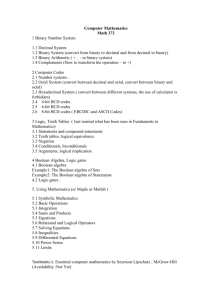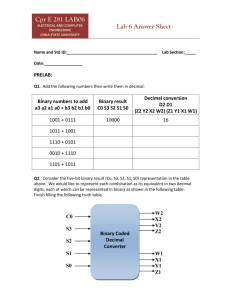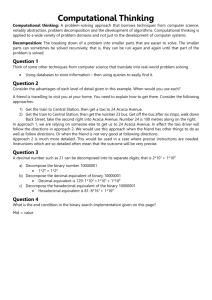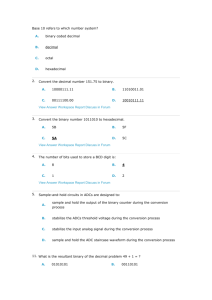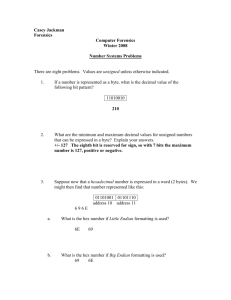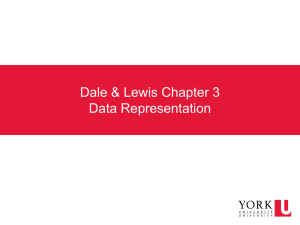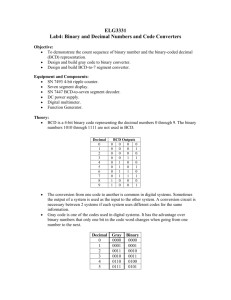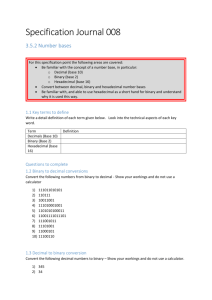Problem Sheet 1
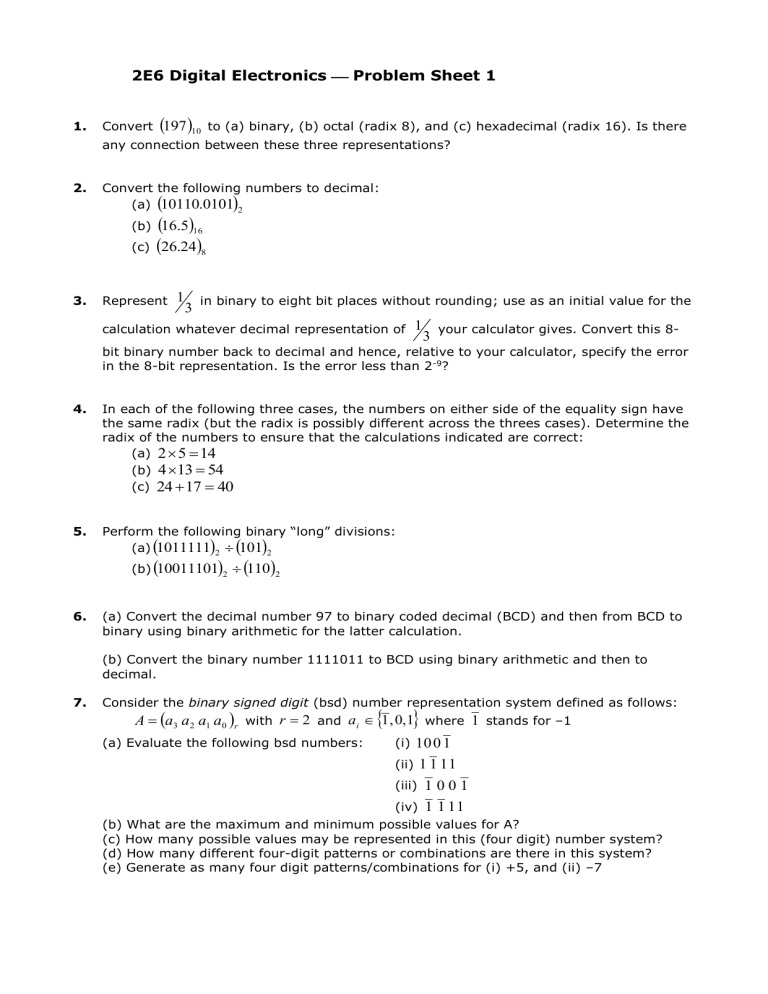
2E6 Digital Electronics
Problem Sheet 1
1. Convert
10
to (a) binary, (b) octal (radix 8), and (c) hexadecimal (radix 16). Is there any connection between these three representations?
2. Convert the following numbers to decimal:
(a)
(b)
(c)
10110 .
0101
16 .
5
16
26 .
24
8
2
3. Represent 1 in binary to eight bit places without rounding; use as an initial value for the
3 calculation whatever decimal representation of 1 your calculator gives. Convert this 8-
3 bit binary number back to decimal and hence, relative to your calculator, specify the error in the 8-bit representation. Is the error less than 2 -9 ?
4. In each of the following three cases, the numbers on either side of the equality sign have the same radix (but the radix is possibly different across the threes cases). Determine the radix of the numbers to ensure that the calculations indicated are correct:
(a) 2 5
(b)
(c)
4
24
13
17
14
54
40
5. Perform the following binary “long” divisions:
(a)
(b)
1011111
2
10011101
2
110
2
2
6. (a) Convert the decimal number 97 to binary coded decimal (BCD) and then from BCD to binary using binary arithmetic for the latter calculation.
(b) Convert the binary number 1111011 to BCD using binary arithmetic and then to decimal.
7. Consider the binary signed digit (bsd) number representation system defined as follows:
A
a
3 a
2 a
1 a
0
r
with r
2 and a i
1 , 0 , 1
where 1 stands for –1
(a) Evaluate the following bsd numbers: (i) 1 0 0 1
(ii) 1 1 1 1
(iii) 1 0 0 1
(iv) 1 1 1 1
(b) What are the maximum and minimum possible values for A?
(c) How many possible values may be represented in this (four digit) number system?
(d) How many different four-digit patterns or combinations are there in this system?
(e) Generate as many four digit patterns/combinations for (i) +5, and (ii) –7

